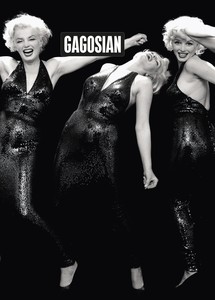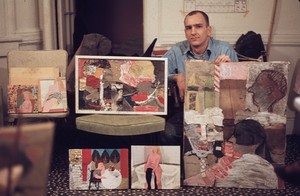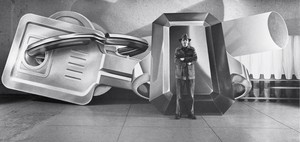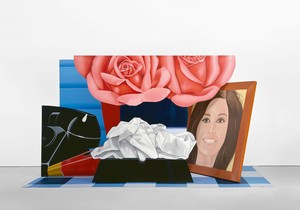
Now available
Gagosian Quarterly Summer 2023
The Summer 2023 issue of Gagosian Quarterly is now available, featuring Richard Avedon’s Marilyn Monroe, actor, New York, May 6, 1957 on its cover.
April 7, 2023
On the occasion of the exhibition Tom Wesselmann: Intimate Spaces at Gagosian, Beverly Hills, Susan Davidson sat down with Jeffrey Sturges to discuss the artist’s key works in his Great American Nudes (1961–73) and subsequent series.
Tom Wesselmann: Intimate Spaces, Gagosian, Beverly Hills, May 3–June 16, 2023
Artwork © The Estate of Tom Wesselmann/Licensed by ARS/VAGA, New York; video: Pushpin Films

The Summer 2023 issue of Gagosian Quarterly is now available, featuring Richard Avedon’s Marilyn Monroe, actor, New York, May 6, 1957 on its cover.

Susan Davidson, editor of the forthcoming monograph on the Great American Nudes, a series of works by Tom Wesselmann, explores the artist’s early experiments with collage, tracing their development from humble beginnings to the iconic series of paintings.

Michael Craig-Martin and Jeffrey Sturges in conversation on Tom Wessselmann’s Standing Still Lifes.

Tom Wesselmann: Standing Still Lifes closes this week at Gagosian New York. In this text, Richard Phillips speaks with Jason Ysenburg about the impact of the exhibition. A video about the exhibition and the artist’s studio practice accompanies the text.
Join us for a look at Tom Wesselmann’s New York studio in this behind-the-scenes video. Featuring archival footage of Wesselmann at work, as well as new interviews with his family, studio team, and friends, the film documents the creative process behind his large-scale works, from early still lifes to later abstractions.

The story behind Tom Wesselmann’s Still Life #59 (1972). Text by Lauren Mahony.

Modern master Henri Matisse was a touchstone for American Pop artist Tom Wesselmann throughout his career.

A 1964 publication by the Chinese-American artist and poet Walasse Ting and Abstract Expressionist painter Sam Francis.
Join Brooke Holmes, professor of Classics at Princeton University, and Lissa McClure and Katarina Jerinic, executive director and collections curator, respectively, at the Woodman Family Foundation, as they discuss Francesca Woodman’s preoccupation with classical themes and archetypes, her exploration of the body as sculpture, and her engagement with allegory and metaphor in photography.
In conjunction with Marks and Whispers, at Gagosian, Rome, Oscar Murillo and Alessandro Rabottini sit down to discuss the artist’s paintings and works on paper in the exhibition, as well as how the show emphasizes the formal, political, and social dimensions of the color red in Murillo’s work of the last decade.
In this video, Gagosian presents a conversation between Jordan Wolfson and Johanna Burton, Maurice Marciano Director of the Museum of Contemporary Art, Los Angeles. The pair discuss Wolfson’s animatronic work of art Body Sculpture (2023).
Gagosian hosted a conversation between Louise Bonnet and Stefanie Hessler, director of Swiss Institute, New York, inside 30 Ghosts, the artist’s exhibition of new paintings at Gagosian, New York. The pair explores the work’s recurring themes—the cycles of life, continuity and the future, and death—and discuss how the conceptual and pictorial structures Bonnet borrows from seventeenth-century Dutch still-life painting converge to form a metaphor for hard labor, basic animal urges, and the things we often try, but fail, to hide.